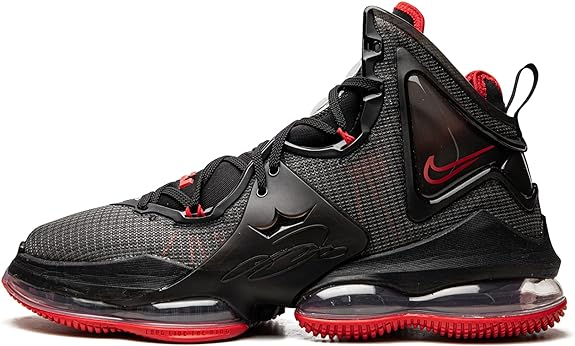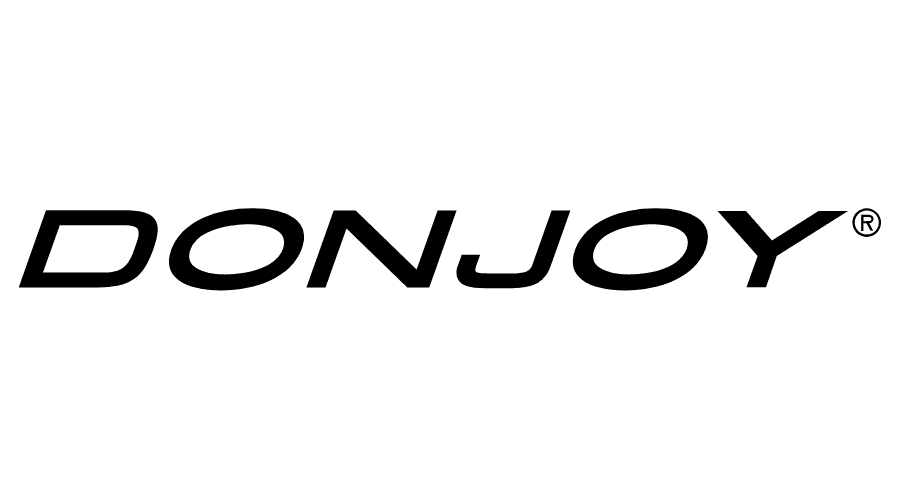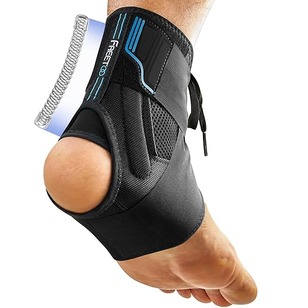REVIEW: BEST ANKLE BRACE CHRONIC INSTABILITY
1. DonJoy ANKLE BRACE
- This brace uses “On Demand” tech, activating when needed to stop ankle rolls and common injuries.
- It’s made to let athletes move naturally while giving strong support where it’s needed.
- The molded TPU shell fits any foot shape, ensuring a perfect fit with its slim design and adjustable features.
- The comfy EVA lining adds extra comfort without being bulky.
- Designed to treat and prevent ankle instability, ankle sprains, and control rolling effectively.
2. ASO ANKLE BRACE
- Made from tough nylon, this stabilizer has Stabilizing Straps forming a figure-eight, ensuring full protection and support for the ankle.
- The elastic cuff closure not only boosts support but also keeps laces and straps secure for a snug fit.
- Feel top-notch comfort with the CoolFlex Achilles pad and tongue, ensuring breathability.
- The high-quality nylon boot guarantees exceptional strength and durability.
- With its bilateral design, each size fits both left and right feet, easily fitting into any shoe with its low-profile construction.
3. MCDAVID ANKLE BRACE
- Effectiveness: This brace is great for relieving pain and providing support for different moderate ankle instabilities, including Achilles tendon-related issues.
- Low Profile: With Biologics engineering, it’s lightweight yet very supportive. The adjustable elastic ankle wrap ensures a snug and personalized fit.
- Quality Design: It has a Flex-link hinge design, giving the maximum ankle support and letting you move naturally during various activities.
- Left or Right: Made for either the right or left ankle, it suits both men and women, including teen athletes and some bigger kids.
- Comfort: Experience top-notch comfort with memory foam padding around the ankle joint. Multiple anchor straps let you customize and adjust the fit according to your preference.
WHAT IS CHRONIC ANKLE INSTABILITY?
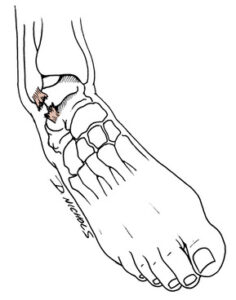
Chronic ankle instability (CAI) is when someone keeps getting ankle sprains or feels like their ankle is wobbly, even after the first injury heals. This usually happens if the ankle wasn’t treated or rehabbed properly after the sprain.
An ankle sprain is when the ligaments around the ankle get stretched or torn, often from twisting or turning the foot. If the first injury isn’t taken care of right or the rehab isn’t done fully, it can cause ongoing problems with how stable and useful the ankle is.
CAUSES OF CHRONIC ANKLE INSTABILITY
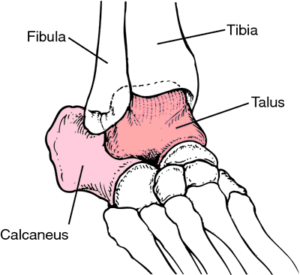
CAI can happen for different reasons, usually starting with not treating or rehabbing an ankle sprain properly. Some common causes include:
Ligaments Not Healing Right: If the ligaments hurt in the first ankle sprain don’t heal properly, they can stay weak or stretched, making the ankle unstable.
Not Enough Rehab: Skipping proper rehab after an ankle sprain can lead to weaker muscles, less feeling of where the body is (proprioception), and less overall ankle stability.
More Sprains: Each time you sprain your ankle again, it raises the chance of chronic instability. Multiple sprains can damage ligaments and other supports.
Weak Muscles: Weak muscles around the ankle, especially the peroneal muscles on the outside of the lower leg, can make instability worse. Muscle imbalances can affect how well you can control your ankle’s movement and stability.
Loose Joints: Some people naturally have looser ligaments and joints, making them more likely to have ankle instability, especially after a sprain.
SYMPTOMS OF CHRONIC ANKLE INSTABILITY
Common symptoms of CAI include:
Recurrent Sprains: People with CAI often keep getting ankle sprains, sometimes with little or no injury.
Feeling of Giving Way: There’s often a feeling that the ankle is giving way or buckling, even during normal activities.
Swelling and Pain: Swelling and pain may keep happening, especially after being active or standing for a long time.
Weakness: You might feel like the ankle is weak, affecting how well you can balance and use it.
HOW TO DIAGNOSE CHRONIC ANKLE INSTABILITY?
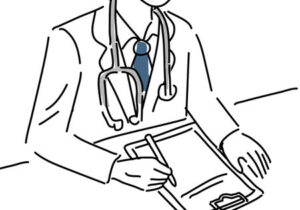
To diagnose chronic ankle instability (CAI), a healthcare professional, like a sports medicine physician, orthopedic surgeon, or physical therapist, usually does a thorough evaluation. Here’s what the process may involve:
- Medical History
The healthcare provider will ask about your medical history, including past ankle injuries, how often you’ve had sprains, and if you’re still dealing with instability symptoms.
- Physical Examination
They’ll carefully check your ankle joint, looking at things like how it moves, its strength, and if it feels stable. Specific tests may be done to check the ligaments and see if there are signs of instability.
- Functional Assessment
Your ability to do everyday activities like walking, running, and keeping balance will be assessed to find any issues or unusual movement patterns.
- Imaging Studies
While not always needed, imaging studies like X-rays can be ordered to rule out other causes or to see how badly the ligaments are damaged. MRI may be used for a detailed look at soft tissues, including ligaments.
- Stress Testing
Specific forces are applied to the ankle joint to see how stable it is. Tests like the anterior drawer test or talar tilt test may be used to stress the ligaments.
WHAT IF YOU HAVE SYMPTOMS OF CHRONIC ANKLE INSTABILITY?
If you’re struggling with chronic ankle instability symptoms, it’s really important to tell your healthcare provider all about your symptoms and any past ankle injuries when they check you. This helps them figure out exactly what’s going on and make a plan to help you.
Once they know what’s up, the plan to treat chronic ankle instability might include non-scary stuff like physical therapy, exercises to make your ankle stronger, learning how to feel where your body is better (that’s called proprioception), and using things like braces or special shoe inserts for support. If things are super serious or these treatments don’t work, they might talk about surgery, like fixing up the ligaments in your ankle.
CHRONIC ANKLE INSTABILITY TREATMENT
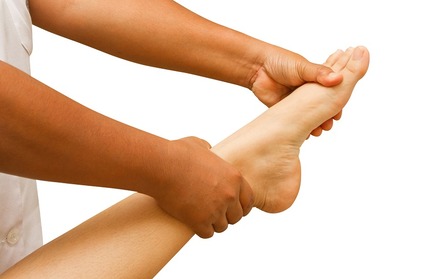
The treatment of chronic ankle instability (CAI) typically involves a combination of conservative measures and, in some cases, surgical intervention. Here are some common approaches to address chronic ankle instability:
- Physical Therapy:
- Strengthening Exercises:
- Focusing on muscles around the ankle, especially the peroneal muscles on the outside of the lower leg.
- This strengthens the ankle, offering improved support and stability to the joint.
- Range of Motion Exercises:
- Engaging in exercises that boost flexibility and widen the range of motion in the ankle joint.
- Proprioceptive Training:
- Participating in exercises targeted at improving proprioception.
- This enhances the body’s awareness of its position in space, leading to better balance and stability.
- Strengthening Exercises:
- Bracing and Supportive Devices:
- Ankle Braces: Supportive ankle braces or taping techniques may be recommended to provide additional stability during activities.
- Orthotics: Custom orthotic devices can help address any underlying issues with foot mechanics and provide additional support.
- Footwear Modification:
- Appropriate Footwear: Wearing shoes with proper support and stability can help prevent further episodes of instability. High-top shoes may offer additional ankle support.
- Activity Modification:
- During the early stages of treatment, it may be wise to avoid engaging in activities with a high risk of ankle sprains. This could include certain sports or navigating uneven terrain. Taking this precautionary measure helps protect the ankle and supports the healing process.
- Medication:
- To address pain and inflammation linked with chronic ankle instability, healthcare providers may prescribe nonsteroidal anti-inflammatory drugs (NSAIDs). These medications can help manage discomfort and reduce swelling in the affected area.
- Injections:
- Sometimes, corticosteroid injections may be employed to alleviate inflammation and reduce pain in cases of chronic ankle instability.
IS CHRONIC ANKLE INSTABILITY PERMANENT?
Chronic ankle instability (CAI) doesn’t have to stick around forever, and getting the right treatment can often help improve how you feel and how well your ankle works. But how much things get better can be different for each person, depending on things like how bad the instability is, what caused it, and how well the treatments work.
For lots of folks, treatments that aren’t scary, like physical therapy, exercises to make the ankle stronger, learning to feel where your body is better (that’s proprioceptive training), and using things like braces or special shoe inserts can really help. These treatments aim to make your muscles stronger, help you know where your ankle is, and overall, make your ankle more stable.
CAN CHRONIC ANKLE INSTABILITY BE CURED?
Dealing with chronic ankle instability (CAI) can get better with the right treatment, but completely fixing it might be different for each person. How well treatment works depends on things like what caused the instability, how bad the ligament damage is, and how much effort you put into rehab and preventing more problems.
Here are some ways to treat chronic ankle instability:
Non-Scary Stuff:
Physical Therapy: Doing exercises with a physical therapist can make the muscles around your ankle stronger, help you move better, and improve your balance.
Proprioceptive Training: Doing specific exercises to help you feel where your body is can stop future sprains.
Supportive Stuff:
Braces or Taping: Using things like ankle braces or special tape can give your ankle more support when you’re active.
Orthotic Devices: Inserts for your shoes can also help support your ankle and make it more stable.
More Serious Stuff:
Surgery: If your ankle is really bad or if other treatments don’t work, your doctor might talk about surgery to fix the ligaments.
4 CHRONIC ANKLE INSTABILITY EXERCISES
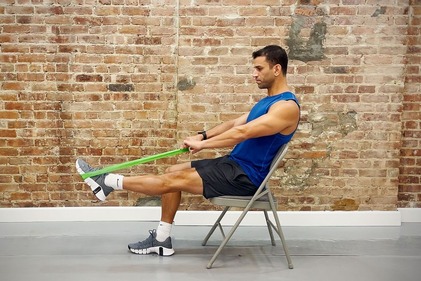
Here are some exercises that can help with chronic ankle instability by making the muscles around your ankle stronger, improving how far you can move your ankle, and helping you feel where your body is:
Calf Raises:
- Stand with your feet apart, hip-width.
- Go up on your toes as high as you can.
- Slowly come back down.
- Do this 15 to 20 times, 3 times.
Toe Taps:
- Sit down with your feet flat on the floor.
- Lift your toes up and tap them down.
- Go back to the start.
- Do this 15 to 20 times, 3 times.
Resisted Dorsiflexion:
- Sit on the ground with your legs straight.
- Put a band around a fixed spot and the top of your foot.
- Pull your toes up toward your shin against the band.
- Do this 15 to 20 times, 3 times for each foot.
Single-Leg Balance:
- Stand on one leg with your knee a little bent.
- Lift your other foot up and balance.
- Hold for 30 seconds to 1 minute.
- Switch legs and do it again.
FAQ
Physical therapy is important for weak ankles because it focuses on making the muscles around the ankle stronger, making the joint more stable, and improving body awareness. Therapists teach specific exercises and activities to help with balance and make the ankle stronger.
Yes, there are certain things that can make weak ankles more likely. These include having a history of many ankle sprains, not doing enough rehab after an ankle injury, playing sports where you jump a lot, having feet with high arches, or having family members with weak ankles.
Ankle braces are often used to help weak ankles by giving extra support to the joint from the outside. They can limit how much your ankle moves, which lowers the chance of sprains and helps you feel where your body is in space better.
No, surgery isn’t always needed for weak ankles. It’s usually only considered if other treatments don’t work or if the ligaments are badly damaged. Things like physical therapy, exercises for your ankles, and making changes in your life can often help with symptoms.
Definitely! Weak ankles can make it tough to do everyday things and enjoy life. People with weak ankles might feel pain, have trouble walking on uneven ground, or find it hard to play sports. They might also worry about hurting their ankles again, which can make them less active and affect how they feel overall.





